In March this year, Animals Tasmania activists spent their weekend rescuing ducks for the opening of the duck-killing season at Moulting Lagoon. Here is the story:
A small group of us arrived at the campsite in the dark late Friday night after a three hour drive up the East Coast of Tasmania. We set up camp and went to bed early for a 4.30am start. We awoke with the moon still high in the sky, ate breakfast, donned our thermals and dragged our kayaks to the water by 5.30. We needed a head torch to make our way safely to the edge of the lagoon but already we were hearing the first of the gunshots resounding through the silent bay. Legally hunters are allowed to start shooting 1 hour before sunrise, this is interesting as there are many ‘non-target’ species of bird in the lagoon, many ‘illegal’ or protected species. At this time we couldn’t see two metres in front of us, much less determine mountain ducks from spoonbill ducks and swans. We climbed into our kayaks and made our way through the perfectly still water. There is an ethereal quality to sailing through such still water at that time of day.
We soon found our way to the first of the small hunting hides that punctuate the stunning lagoon. A hide is a small structure built on stilts just above the water, it is disguised with dead branches and the top is open so that a hunter can stay completely hidden while aiming a gun at unsuspecting birds. You can tell which hides the shooters occupy because they are surrounded by ‘lures’. The lures are floating, life-like duck mannequins that the shooters arrange so as to resemble a flock of ducks safely swimming around the hide. The purpose of these lures is to entice the trusting ducks that are passing by to fly down and land near the hide among ‘their kind’. Our job as activists and duck rescuers was to kayak near the occupied hides wearing high visibility clothing and attempt to divert the birds out of range of the shotguns. To do this we would use whistles and movement to signal to the ducks that the area wasn’t safe so they would fly higher and divert away from the hidden danger. The shot guns have a range of 50 metres and work by releasing a spray of small steel pellets that span out to cover a wide ‘kill spread’ when aiming at a group of birds. This is helpful for hunters because they don’t require a lot of skill to hit a bird. It is awful for the ducks because for every one who may be mortally injured there may be ten ducks that suffer injuries from these pellets that allow them to get away. Many are disabled and die slowly over the coming two to three days. It isn’t uncommon to see a group of ducks flying in a beautiful V formation over the hides, to hear a shot, and then to see one or two of the group suddenly jerk as if they have been hit and continue flying. For these reasons, our main objective as rescuers was to peacefully divert the ducks out of range of the shotguns to protect them from both mortal and sub-mortal injuries.
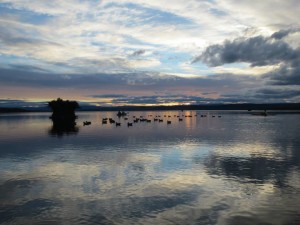
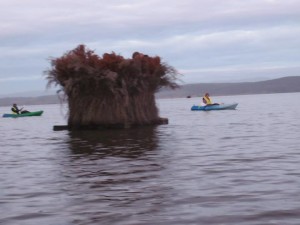
Another method that we employed to save birds was to chat to the hunters about what their motivations were for shooting the birds in the pristine lagoon. We received varied responses from the shooters. Some explained that they came to the lagoon for a sense of tradition, that they were the fifth generation to take lives in their particular hide. Unfortunately however some of the most harmful words throughout history have been ‘it has always been done this way’. Other shooters explained that they had a deep love of the environment. This is understandable; the lagoon is pristine, nearly untouched raw Tasmania. The water reflects the sky and is dotted with flocks of graceful black swans and the occasional regal pelican, only marred by the numerous hides disturbing the natural banks. Flocks of ducks form V formations overhead and both the sunrise and the sunset light up the sky in an incredible display of pinks and orange.
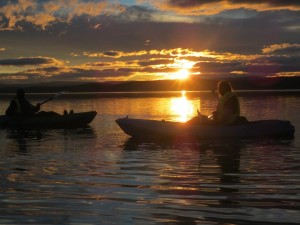
This, however, doesn’t explain the need to cover the soundtrack of swans honking and birds singing with the shocking boom of shots fired, to rearrange the V formations by removing group members or why one would want to disturb the glassy waters with clumps of feathers ripped from a trusting duck’s still-warm body. I might suggest one could perhaps enjoy the spectacular environment all the more should they replace the loud and violent shotgun with a quiet and kind camera and binoculars.
Of course, not all of the responses we got were so civil. We were sworn at and called all forms of atrocities. There were jeers and there were, interestingly, death threats. One of our activists was threatened with a shot gun aimed at her chest and was told by the men that they would push her out of her kayak. She felt the need get out of her kayak for her own safety and as a result risked drowning in the muddy bottom of the lagoon. Three more of us were threatened, told that we would get a bullet between the eyes and that the shooter would ‘spear’ us, cave our heads in with a rock and numerous other horrific threats including rape of our female activists. This shooter proceeded to throw large rocks at us and threatened us with death should we touch any of his decoys, something we never intended to do. We were simply kayaking in a public lagoon, occasionally we would blow our whistles and splash the water. Everything that we were doing was legal and we received numerous death threats from those that held gun licenses and loaded weapons. In Tasmania we issue over 1000 duck hunting licenses every year, this license gives the shooter the right to kill a maximum of 10 ducks per day throughout the season. The duck-shooting season lasts for three months. Doing some quick math, if a hunter was particularly motivated and ‘skillful’, it would be legal for him or her to kill 10 ducks a day for approximately 90 days. 900 ducks a season. As we issue 1000 licenses each year we legalise the killing of 900,000 ducks in Tasmania every year over one quarter of the year. This is without taking into account those injured that the hunter doesn’t get to collect that don’t then move him towards his bag limit. It should also be noted that several duck species are monogamous and only take one partner for life so when one is shot the other is incapable of going on to breed.

I suppose one shouldn’t be surprised by this, let’s call it, ‘inhibition’ as some of the members of our group heard the very regular sound of empty cans being dropped inside the hides they were guarding and when we cleaned up a small portion of the bank of the lagoon on the last day we picked up a bag full of empty beer cans and plastic rings from six packs amongst the many non-biodegradable shot casings littering the shore. This calls into question the arguments about hunters being the ‘true conservationists’ and doing it for a love of the environment.
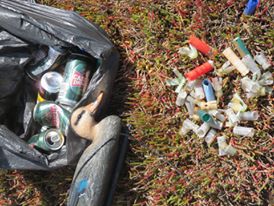
Duck hunting is a cruel pastime that inevitably stresses sensitive water-bird populations, that has no guarantee of accuracy or mortality and leaves many animals maimed, to die slowly over coming days and the number of ducks that may legally be killed is unsustainable. The law in no way guarantees that protected species won’t be harmed and the reasons of tradition and ‘conservation’ are tired excuses for ‘big men’ compensating for something. Our public camping grounds and pristine local travel destinations are marred with violence towards animals as well as danger to the general public and death threats to those legally attempting to enjoy the pleasures of the lagoon. Duck hunting is already illegal in several Australian states and Tasmania is the next place that needs to make this legislative move. Until we do duck hunting is marring our tourist destinations and will remain one of Tassie’s great shames.

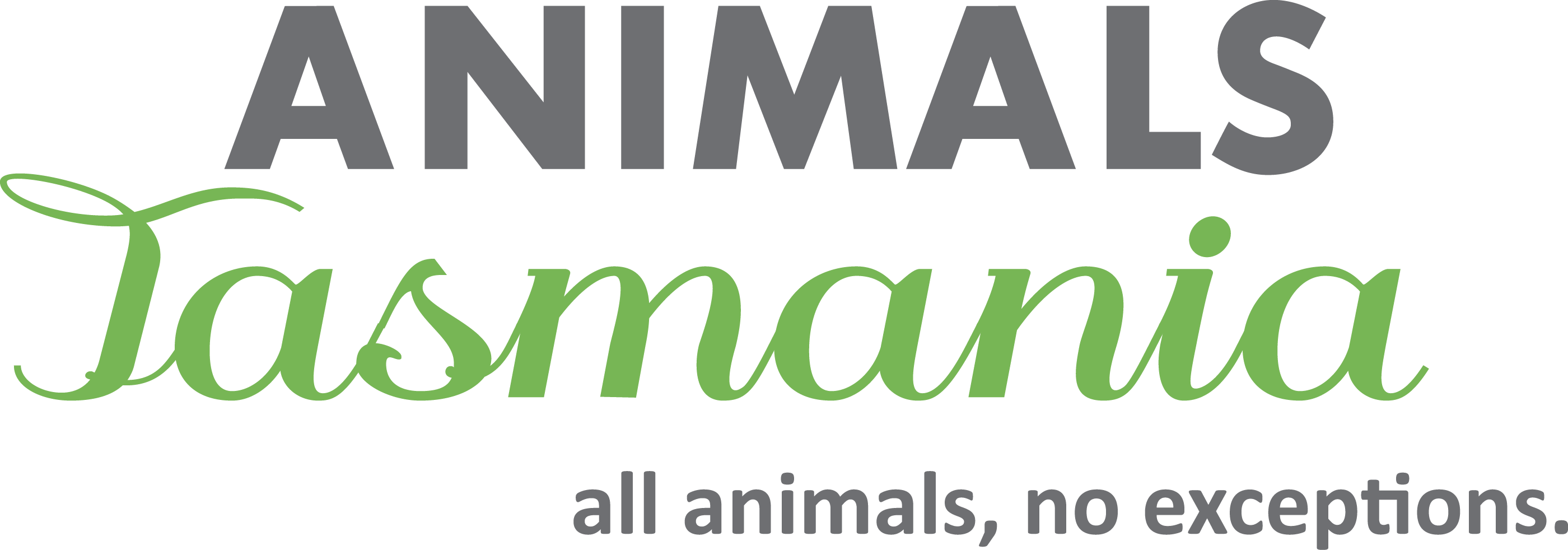
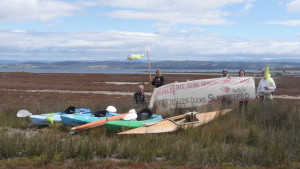


I want to go back to this beautiful place, and I want everyone to see how wonderful it is, and how these hunters destroy this wonder.